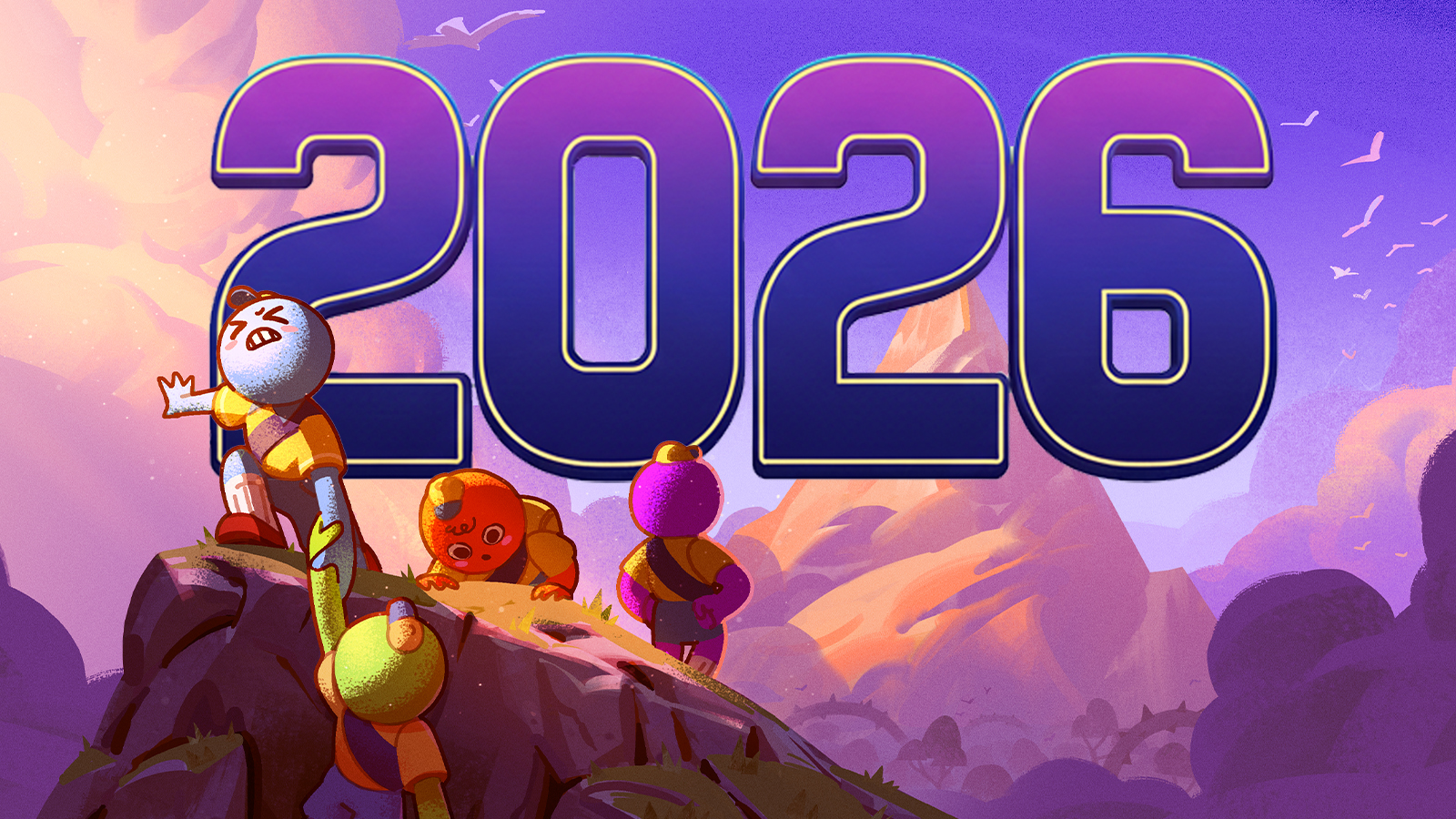The ideal home studio setup - three pro digital artists show us their cutting edge kit
Veteran VFX supervisor Victor Perez, concept artist Jose Vega, and Houdini FX artist Tim Van Helsdingen show us their home studios.
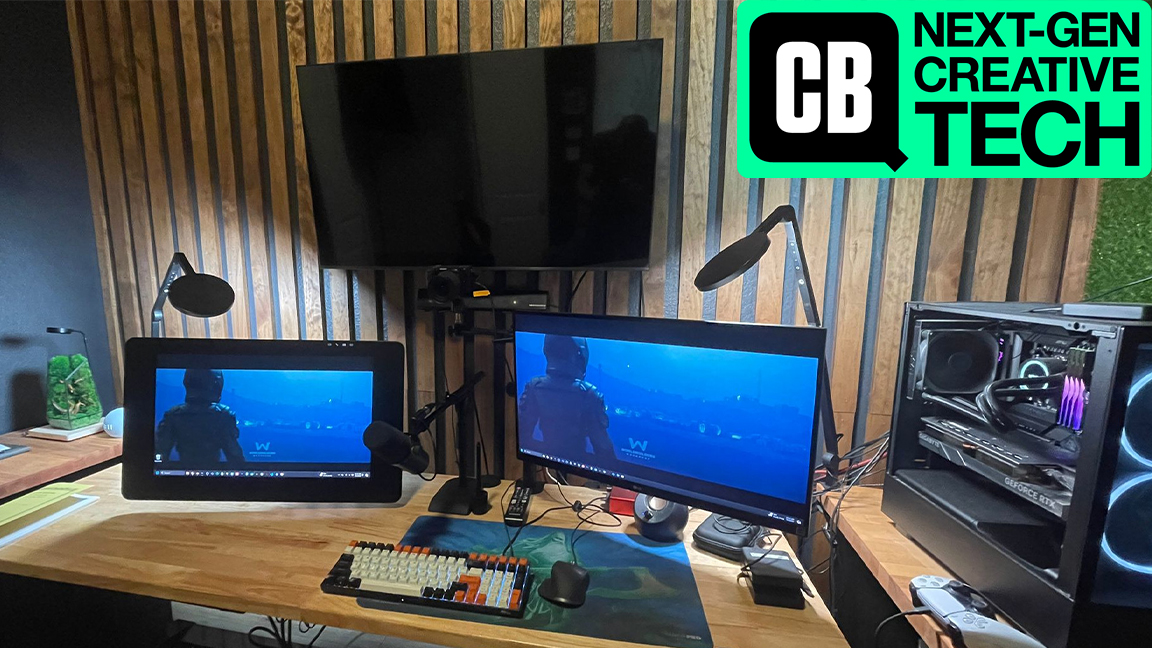
Getting the perfect home studio setup is becoming a focus for many digital artists. These days you don’t have to be working in-house at a top VFX, animation or film studio to get access to cutting edge creative technology - it’s possible to have astonishingly powerful kit at home.
Not only are remote-working and collaboration tools better than ever, you’ll also find an array of next-gen tech that makes digital art seem almost tangible. For example, software like CineSync enables VFX artists and video editors to collaborate with each other and their clients on detailed shot reviews as if they were in the same room. And tools such as the best VR headsets and 3D scanners enable artists to fully immerse themselves in their work and insert objects from the real world into the virtual one.
On top of this, you’ll find that if you buy the right things, you can get a lot of bang for your buck. Take NVIDIA RTX graphics cards, for instance. Not only do you get a card that’s designed to run all of the AI-powered features you find in art software today, you also get a massive suite of software that can do incredible things such as cleaning up live video on the fly, and make 3D software packages interoperable. (Read our guide to how Nvidia RTX can speed up creative workflows for more information.)
In this article Houdini FX artist Tim Van Helsdingen shows us his self-built workstations that are customised for a 3D workflow. Visual development and concept artist Jose Vega shows us how he uses a VR headset to design 3D environments while standing inside them, a 3D scanning app on his phone to capture useful objects from real life, and a Wacom tablet with a Pro Pen that reacts to pressure and rotation much like traditional art materials. Finally, veteran Hollywood VFX artist and director Victor Perez shows us his ultra-high end edit suite he uses for VFX, colour grading, film editing and client screenings.
If you haven’t upgraded your home studio setup in a while and want some inspiration, look no further. If you are looking to upgrade, then read our guides to the best laptops for 3D modelling, best laptops for drawing and the best drawing tablets.
This article is part of our Next Gen Creative Tech week.
Home studio setup: Tim Van Helsdingen
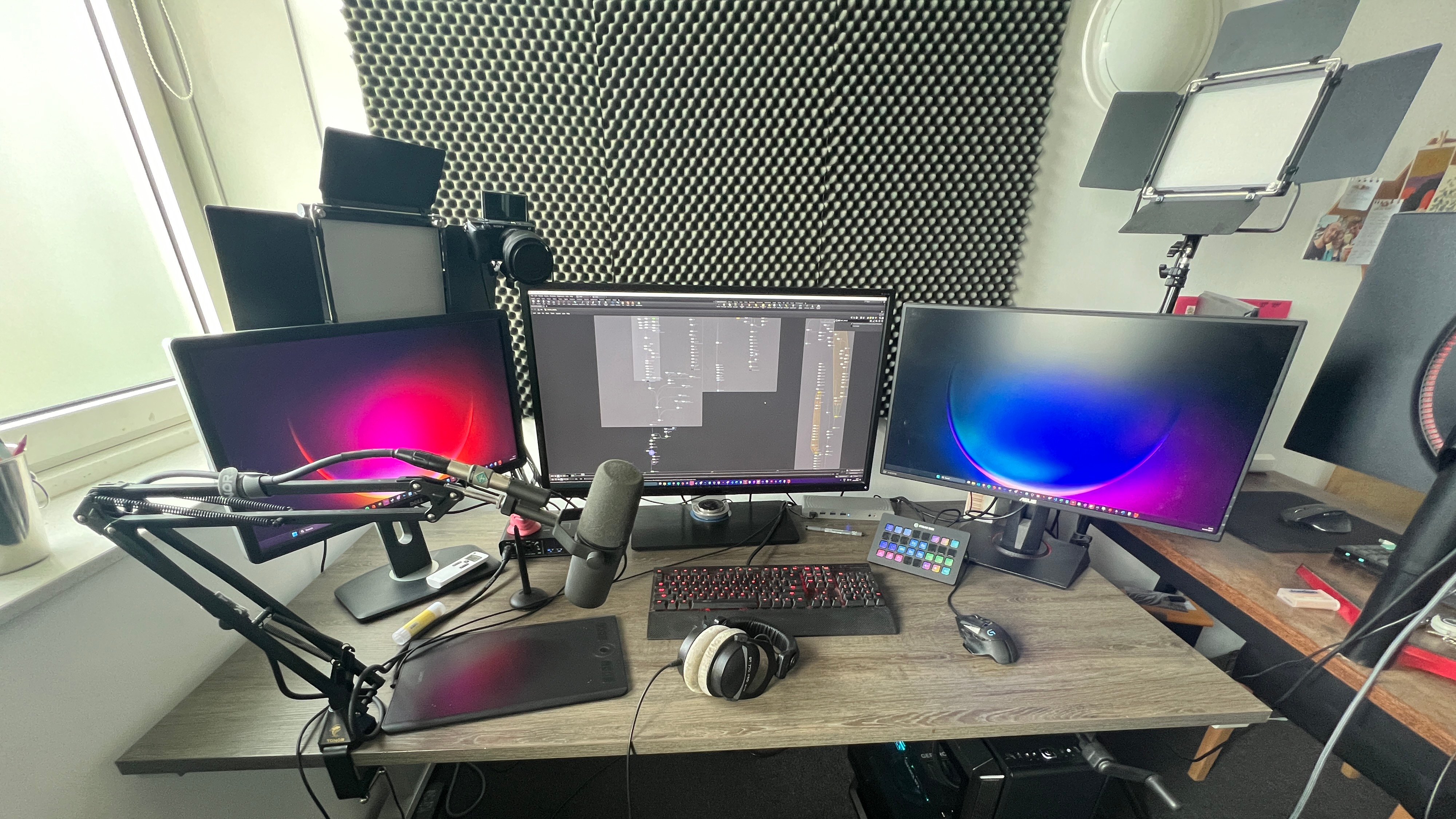
Tim Van Helsdingen: "My primary use of computer hardware involves running simulations in Houdini and rendering them using either Redshift (GPU rendering) or Karma XPU (also GPU rendering). I currently have two machines: one for work and another dedicated to simulation and rendering. I originally built my simulation machine as a workstation back in 2020, with a GPU upgrade in 2021. This machine was where I went all-out with what I could afford at the time. It features an AMD Ryzen Threadripper 3970x (32 cores/64 threads), 256GB of RAM, dual 4TB NVME drives in RAID for my work drive, and a 1TB NVME for Windows.
Daily design news, reviews, how-tos and more, as picked by the editors.
"Initially, I had a single RTX 3090, but I added a second one in 2021. I fully watercooled this system to enhance performance and reduce the noise from the 3090s, which were quite loud due to their blower models. Building a fully watercooled system was something I always wanted to do, so it was a fun project. You watch my YouTube video to see how I built it.
"The system ran great and was extremely fast until late 2022 when I started encountering more and more random issues. It turned out that the motherboard was faulty. These motherboards were no longer in stock, so I had to wait six weeks for my RMA to be handled, which was frustrating as I had ongoing projects. As a result, I decided to build a new system while waiting for the RMA (it’s pretty crazy for a $1000 motherboard to fail within two years)."
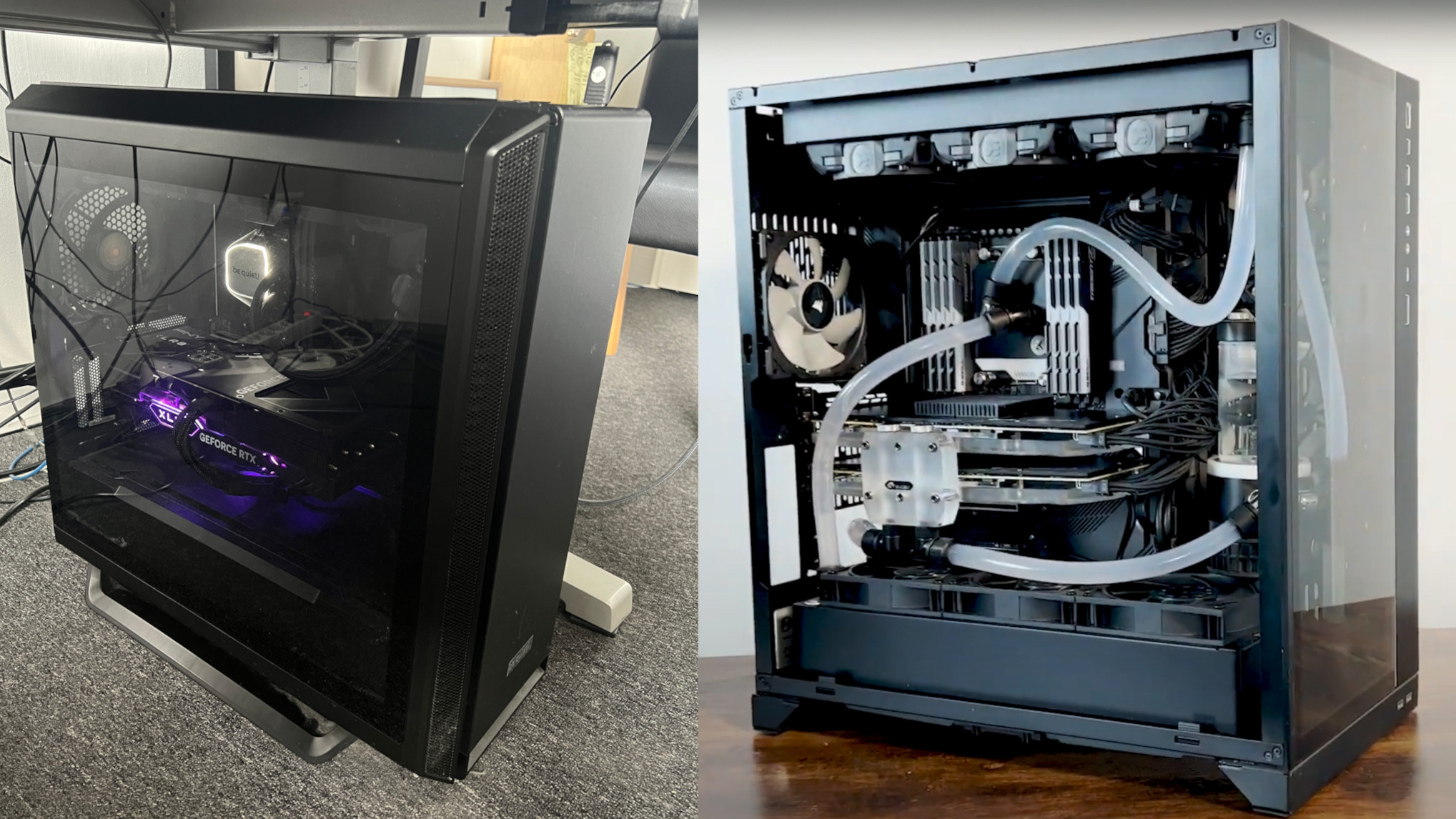
"This experience taught me a valuable lesson: I wouldn’t recommend a fully watercooled workstation. If it breaks, disassembling it takes days, and you need to test for leaks again, making it very time-consuming. It might be a fun hobby for a gaming system, but I would never do it again for a workstation.
"I even had a recent issue where algae growth appeared in the tubes, forcing me to disassemble the entire loop to clean it out. That took another three or four days. So, yeah, don’t watercool your workstation!
"This brings me to my current workstation: an Intel 13900K, 128GB RAM, and an RTX 4090 (which had just been released at the time). It also has dual 4TB NVME drives for work and a 2TB drive for Windows. I didn’t skimp on components, with the idea of keeping this as my new workstation and using the Threadripper machine as a rendering rig once I got it back."
Making component choices
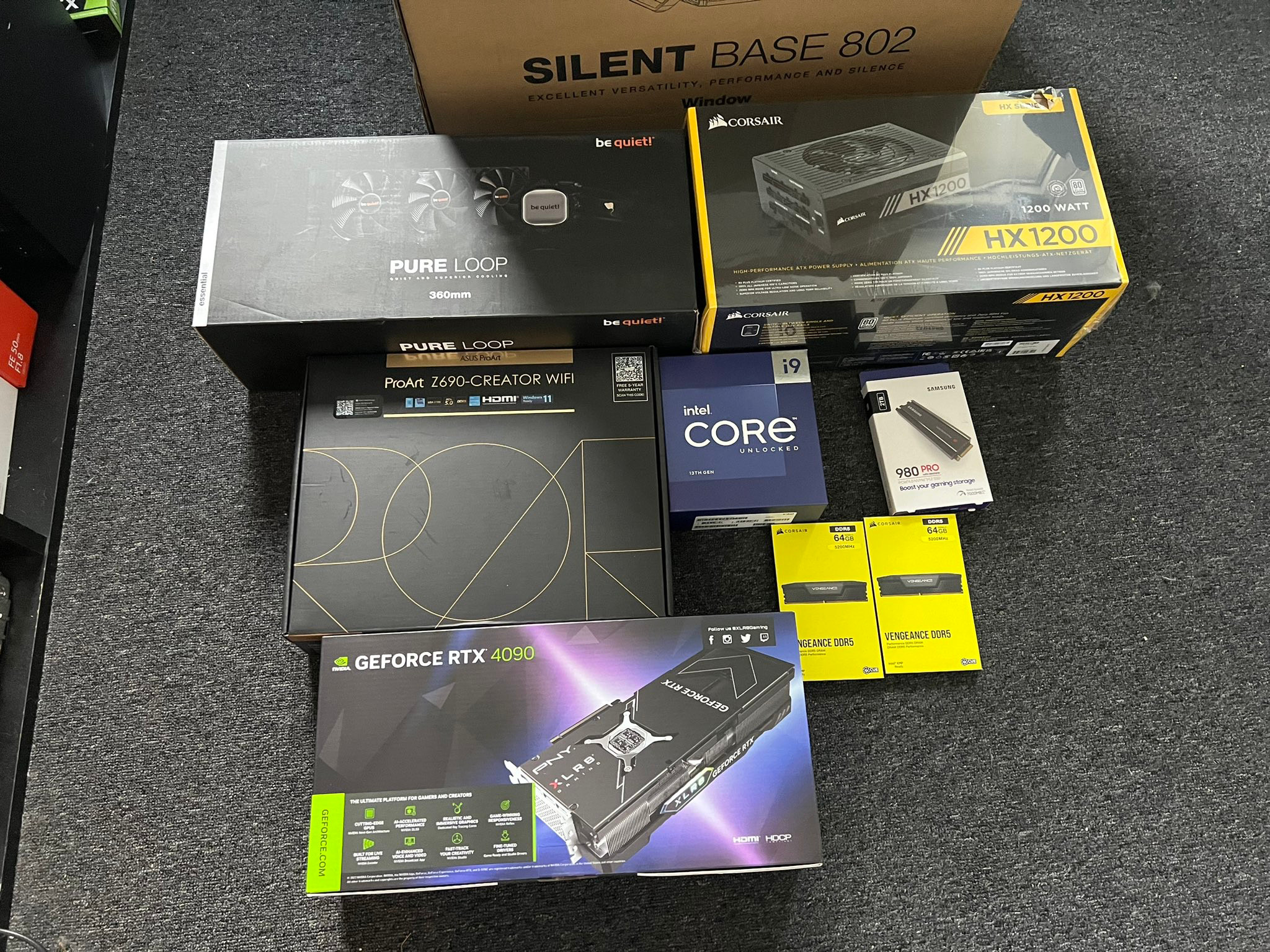
"When building a PC for a workstation, you need to consider what tasks you’ll be doing. For example, not all tasks require many cores and might perform better on a system with fewer cores but higher clock speeds. If I built a Houdini setup with a lot of single threaded nodes, it would perform faster on my 13900K than on my Threadripper, even though it has fewer cores. However, for heavy simulation or CPU rendering, more cores are beneficial. That’s why I opted for the 32-core Threadripper instead of the 64-core one at the time.
"I do a lot of GPU rendering and simulation, so having 3090s/4090s made sense due to their speed and the amount of VRAM, which determines how large your simulations can be. With machine learning becoming more prominent, having a GPU with as much VRAM as you can afford is a significant advantage."
"For the current workstation, I chose Intel because it offered a more mature system design, and I didn’t want another motherboard failure like before. Interestingly, for those paying attention, Intel’s 13th and 14th gen CPUs are currently experiencing issues.
"For this build, I went with a Be Quiet! case for the first time, primarily because my usual case options (Corsair or Fractal Design) were out of stock. The Be Quiet! case turned out to be the nicest case I’ve ever built in, with a super sleek design and ease of use that I really appreciate."
Deciding on storage
"I use these systems alongside a home-built TrueNAS server with 8x12TB of storage, connected to my machines through a 10GbE switch, which provides fast network speeds. The drive pool is configured using RAIDZ2, meaning two drives could fail and the system would still be operational without data loss.
"I also have an extra mini NAS with about 40TB of usable storage that backs up the main NAS, which in turn backs up to Backblaze. This setup allows me to maintain a full cloud backup of my entire NAS (currently backing up about 24TB for just $8/month). I run this on a mini PC stick with a JBOD connected to it with a bunch of drives.
"I use a program called Resilio to sync my NVME drives between my systems and my NAS. Once a file is updated, it’s immediately synced to the other machines, so I never have to do any manual backups. Everything is automated and always has multiple replicas from which I can restore."
Rendering and simulation
"For rendering and simulation, I use Deadline as a render manager, which is free to use. When I want to run a render or simulation on my Threadripper machine, I submit it from Houdini to the Deadline repository, and the machine automatically gets to work. This is great because you can batch tasks together, and if a job fails, it will pick up where it left off, so there’s no waking up to a computer that decided to restart itself."
Choosing the recording gear
"Aside from my work as a freelancer, I also run a YouTube channel teaching Houdini/CG. For recording, I use a Motu M2 audio interface paired with a Shure SM7B microphone and an Audio-Technica DT770 headset. My camera setup includes a Sony A6400 with a Sigma 16mm 1.4 lens for recording. I use an Elgato Cam Link to connect it to my computer and have a power adapter that plugs into the wall, so I don’t need to keep a battery charged. I also use LED lights when recording."
Input hardware
"I primarily use a Wacom Intuos Pro Medium tablet for input, which has helped tremendously with the RSI I suffer from. I use a mechanical keyboard with Cherry MX Blue switches (I love clicky keyboards!). Currently, I have three monitors of different shapes and sizes. I intend to upgrade my main monitor to an OLED panel once they mature a bit. At the moment, my setup looks a bit janky with all the different sizes, but it gets the job done."
Tim Van Helsdingen is a freelance Houdini FX artist and CG generalist who works from his home office in the Netherlands. Visit Tim Van Helsdingen's YouTube channel for dedicated to teaching.
Home studio setup: Jose Vega
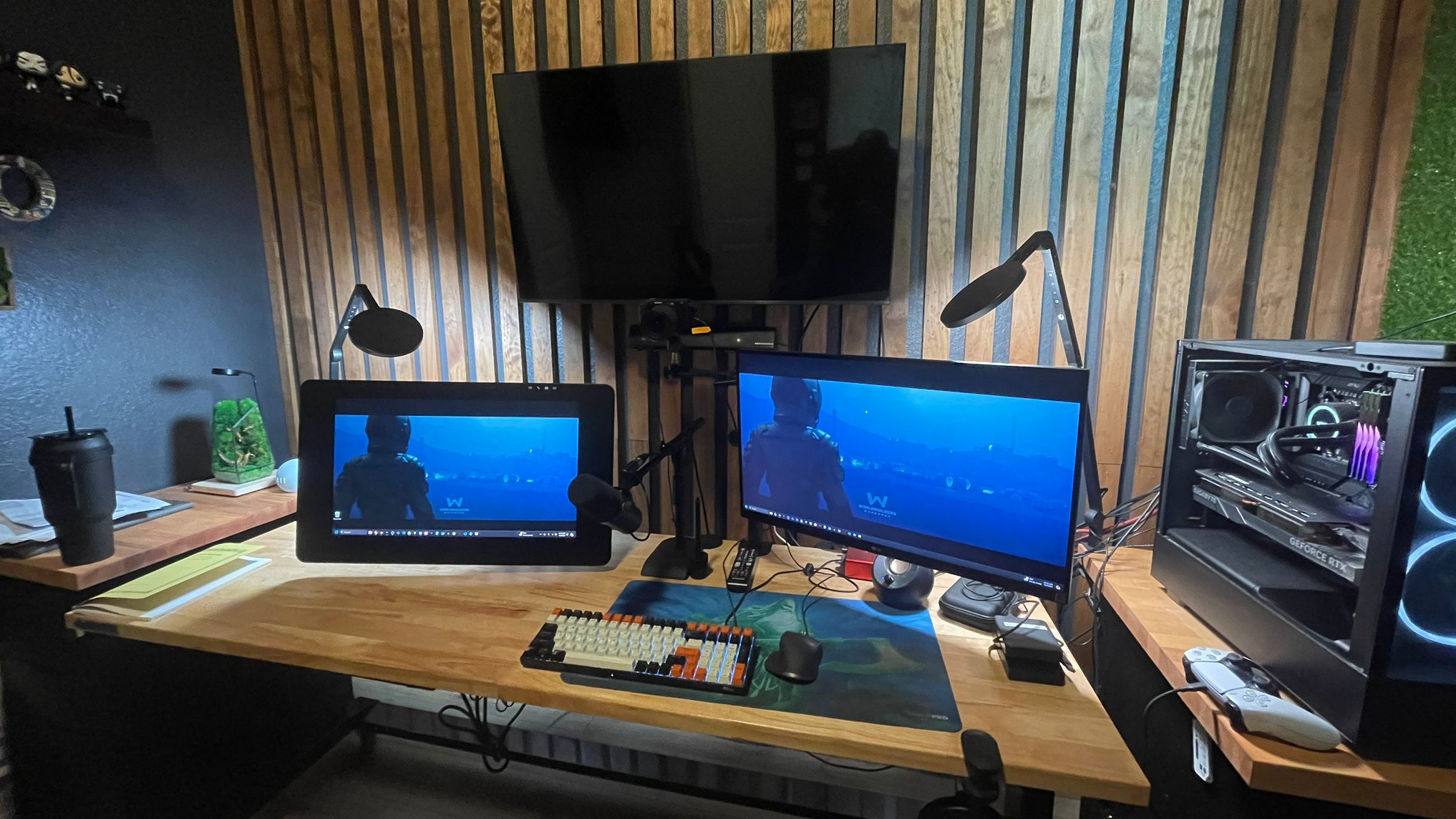
Jose Vega: "On my desk I have two monitors: a 27” Wacom Cintiq, and a 4K LG Monitor. The Cintiq is on the left as I’m left-handed. I also have the Wacom Pro Pen which allows you to use the rotation functionality to control the width of the line you’re drawing. The Cintiq is in the ergonomic stand which allows me to move it around and switch from 3D to painting.
"My desktop computer is by NZXT. It has four internal hard drives, which gives me about 10TB of storage space in total. I have another five external hard drives for more storage and for backups. The graphics card is an NVIDIA Geforce RTX 4090, which I wanted because NVIDIA cards work best for using Blender. I’ve had this build for about two years, and I will probably replace it again in another two years’ time."
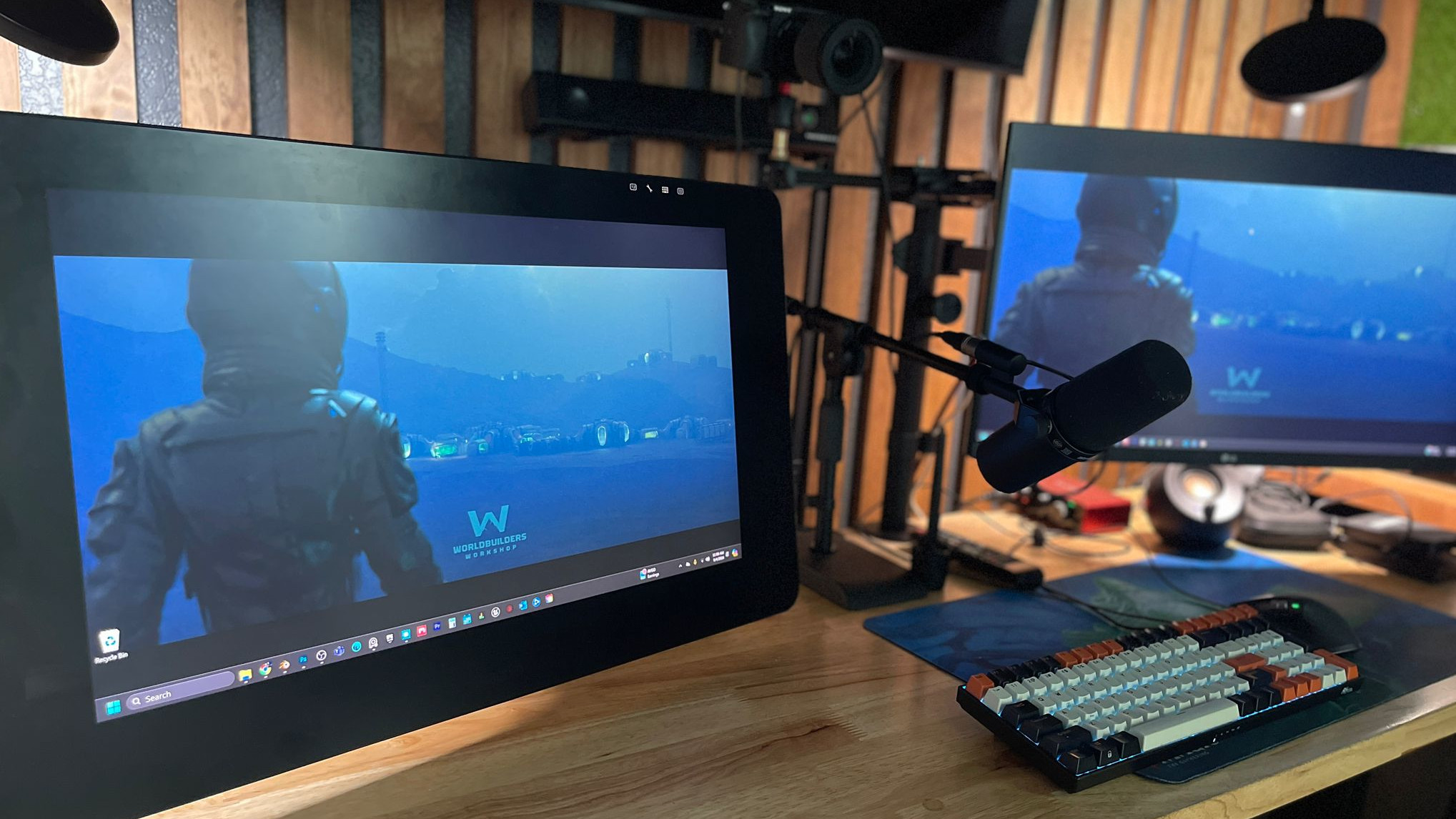
"For 3D scanning, I use an iPhone with the Polycam and RealityScan apps. Polycam can even do LiDAR scans if you have a Pro iOS device. I use 3D scanning to expand my library of 3D assets, and because it’s on my phone, I have it on me whenever I see a good opportunity.
"Sometimes I'm on a hike and I see a cool rock, so I’ll scan it. Or if I'm working on a project that needs something specific that I encounter in the real world then I’ll scan that. I scanned a lot of machines and mechanical things from Home Depot and was able to break them apart and create new things, which you can see on my Artstation profile. Normally the models are more dense and way rougher so it's not always the best choice if you want clean models and light scenes.
"A couple of years ago I added a Quest VR Headset to my setup. I mainly use Gravity Sketch because it's easy to learn and you can jump right into it and start creating. Modeling in VR is very cool because, as someone who concentrates on environment design, I can build things based on the scale of where I am. If I'm concepting some plants or architecture I can actually stand right next to it and be able to see it at all angles, as if I was there. Usually the models are rougher and quicker to make. Whether I’m working on something very basic or something complex, it’s super useful for creating rough models."

"My keyboard is an RK Royal Kludge RK100. It’s a mechanical one, but it's too small for me. I thought I was saving space by getting it at this size, but I prefer a bigger keyboard. This one just looks pretty.
"To make videos for my YouTube channel, I use a Sony 6400 with a 19mm lens camera for recording, a Shure SM7B microphone, and two Lume cube edge lights. The final part of my setup is a wall-mounted TV, which is for entertainment. I like to watch things while I work, and I also play games."
Jose Vega is a concept artist and visual developer working mainly in the video games and film industries. Jose's YouTube channel carries instructional and inspirational videos for artists, and he also runs Worldbuilders Workshop, which has courses to help digital concept artists develop their skills.
Home studio setup: Victor Perez
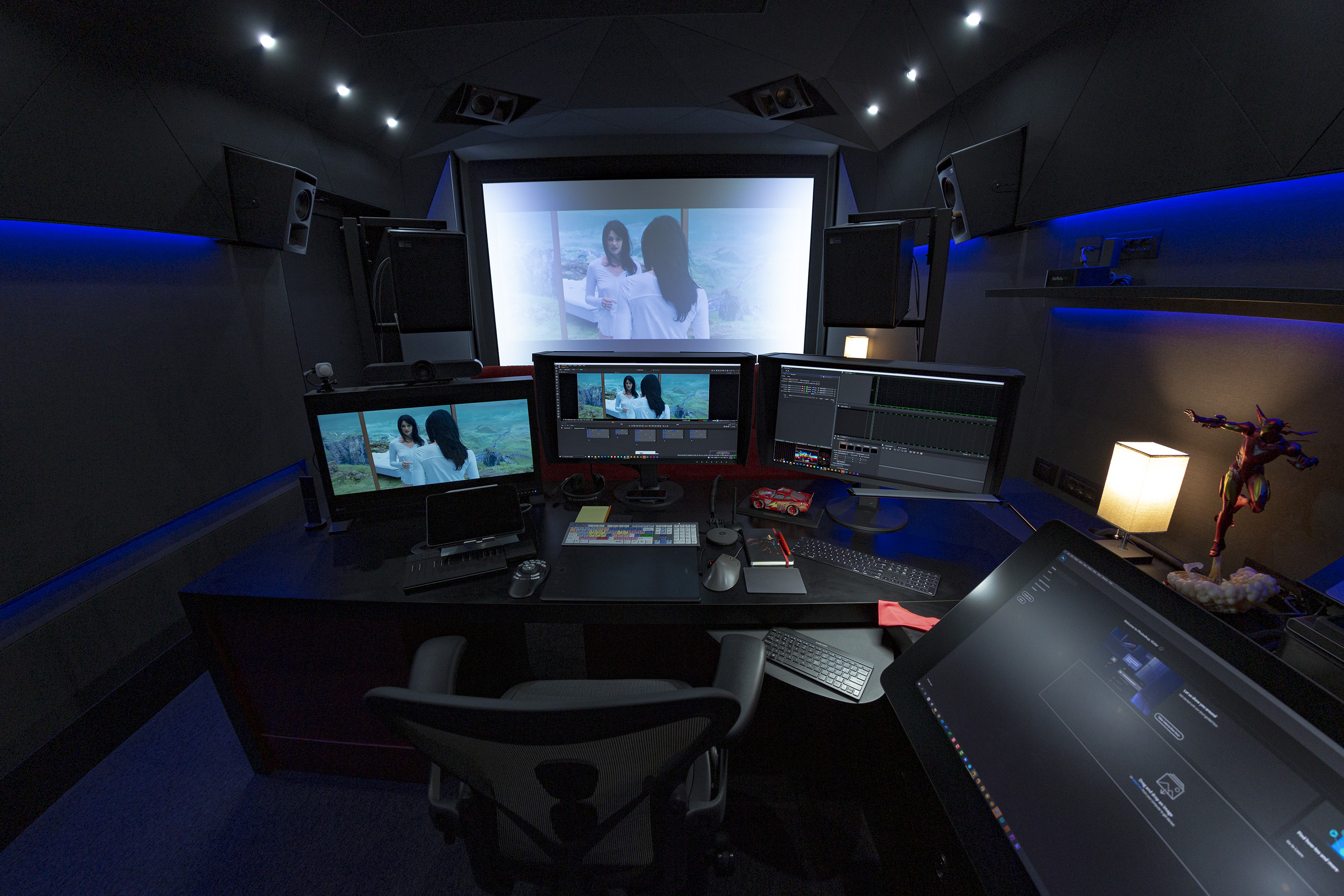
Victor Perez: "My studio is designed as a room within a room, a structure that is entirely suspended on massive springs for maximum acoustic isolation. The walls, ceiling, and floor are acoustically balanced, providing exceptional sound fidelity, and sound-dampening materials have been used to eliminate any external noise. All of this is encapsulated in a room at home!
"The lighting has been designed with both direct and indirect sources, offering a calibrated range of colours to modify the white point. This ensures there’s no colour contamination, so colour perception on the monitors is accurate. The lighting can be adjusted to create various moods, and the domotic-controlled windows can provide full blackout or filter natural light."
Workstation specs
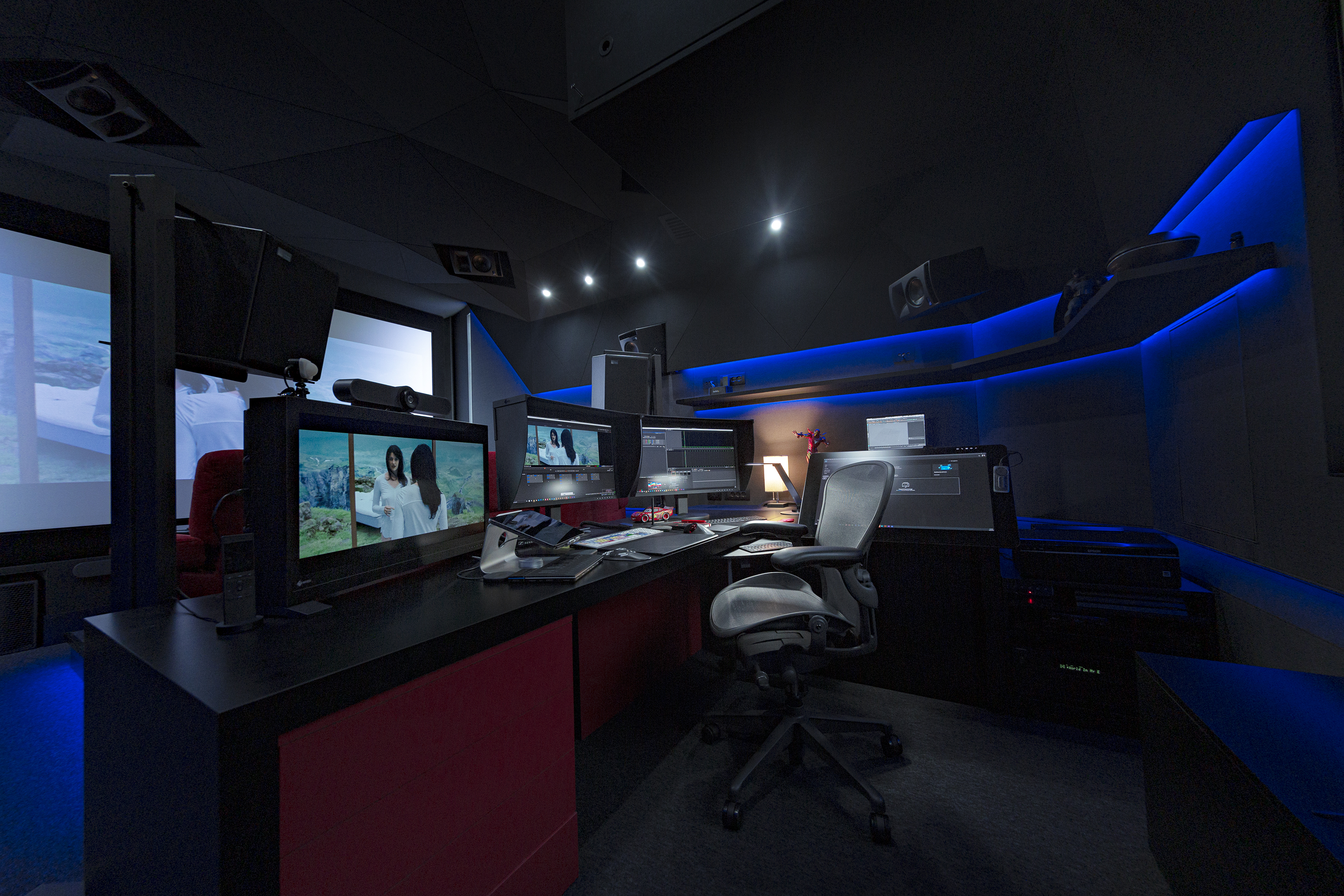
"My computer is a custom-designed 3XS Evolve NLE Pro 8K workstation from Scan Computers. It has an AMD Threadripper Pro 7970X processor and NVIDIA RTX 4090 graphics card (read our guide to the best Nvidia graphics cards), which ensure smooth performance across multiple tasks, from rendering complex VFX shots to editing in 8K. With 128GB of DDR5 memory and 8TB RAID SSD storage, the workstation allows me to handle vast amounts of data with zero lag. The system is optimised for VFX compositing and editing. You can see the build on Scan's website.
"Visual precision is a priority for me, so I use a combination of Eizo ColorEdge monitors. The primary reference display, a ColorEdge CG3145 PROMINENCE, is a 31.1-inch HDR reference monitor that offers DCI-4K resolution and covers 99% of the DCI-P3 color space. This monitor ensures the utmost accuracy in colour grading and review of VFX shots, making it ideal for mastering work intended for the big screen. In addition, two Eizo ColorEdge CG319X monitors flank the setup, providing additional real estate for editing, compositing, and multitasking. Together, these displays create a visual environment where accuracy and detail reign supreme."
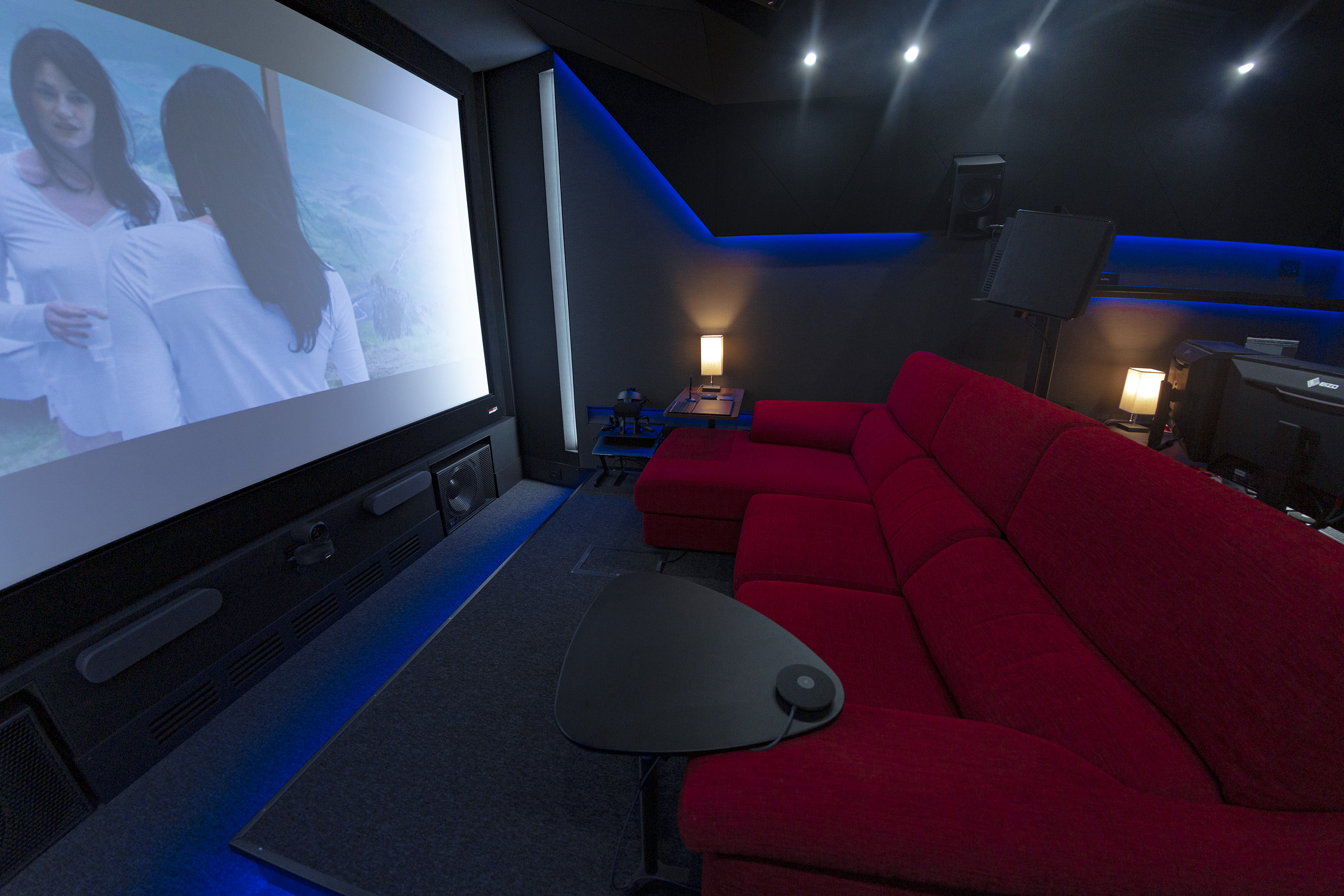
"For sound design and audio post-production, I have a Dolby Atmos (11.4.2 setup) system, which includes 11 Meyer Sound Amie studio monitors and 2 Amie-Sub subwoofers. These reference audio monitors offer exceptional clarity, with the Amie monitors known for their flat frequency response and precision, ensuring accurate audio playback during mixing sessions. The Amie-Sub extends the low-end frequencies, providing deep bass that brings depth to soundscapes. This Dolby Atmos setup allows for immersive, three-dimensional sound experiences, making the studio ideal for final mixing.
"One of the standout features in my studio is the Sony VPL-GTZ380 4K SXRD laser projector. This projector, designed for high-end film production and large-scale screenings, offers 10,000 lumens of brightness and full DCI-P3 color gamut coverage. With HDR support and Sony's X1 Ultimate for projector image processor, this system delivers exceptional image clarity and colour precision, whether the content is viewed in bright or dark environments. This ensures that every visual effects shot is displayed with the fidelity it deserves during client reviews.
One of the standout features in my studio is the Sony VPL-GTZ380 4K SXRD laser projector
Victor Perez
"For hands-on creative work, I use Wacom Cintiq Pro tablets. The Wacom Cintiq Pro 27 offers a 4K display with 120Hz refresh rate, making it the ideal tool for digital art, matte painting, and compositing. Its Pro Pen 3, with 8,192 levels of pressure sensitivity, provides excellent control and precision, essential for detailed VFX work. I also use the Cintiq Pro 17 as a secondary, touch-enabled monitor, positioned beneath the main display for easy access to quick edits and navigation."
Collaboration and tracking software
"For real-time, remote reviews, I use CineSync, a tool that enables frame-accurate video reviews with clients and collaborators, regardless of their location. CineSync ensures that feedback is provided in sync with the media, allowing for seamless discussions and notes on specific frames, which is crucial when working on complex VFX shots. This tool is invaluable for staying connected with international teams and clients during the post-production process.
"Managing a high-volume of visual effects shots and assets requires a robust system, and for this, I use Ftrack as my visual effects database. Ftrack allows me to track progress across every project, from initial concept to final delivery. It serves as a comprehensive VFX management platform, enabling asset tracking, task assignment, and shot approvals with full transparency across the team. This keeps every aspect of the production pipeline in check, ensuring that no detail is overlooked."
Victor Perez is a veteran VFX supervisor, film director, cinematographer and producer.
This article was created as part of Creative Bloq’s focus on Next-Gen Creative Tech, in association with Nvidia.
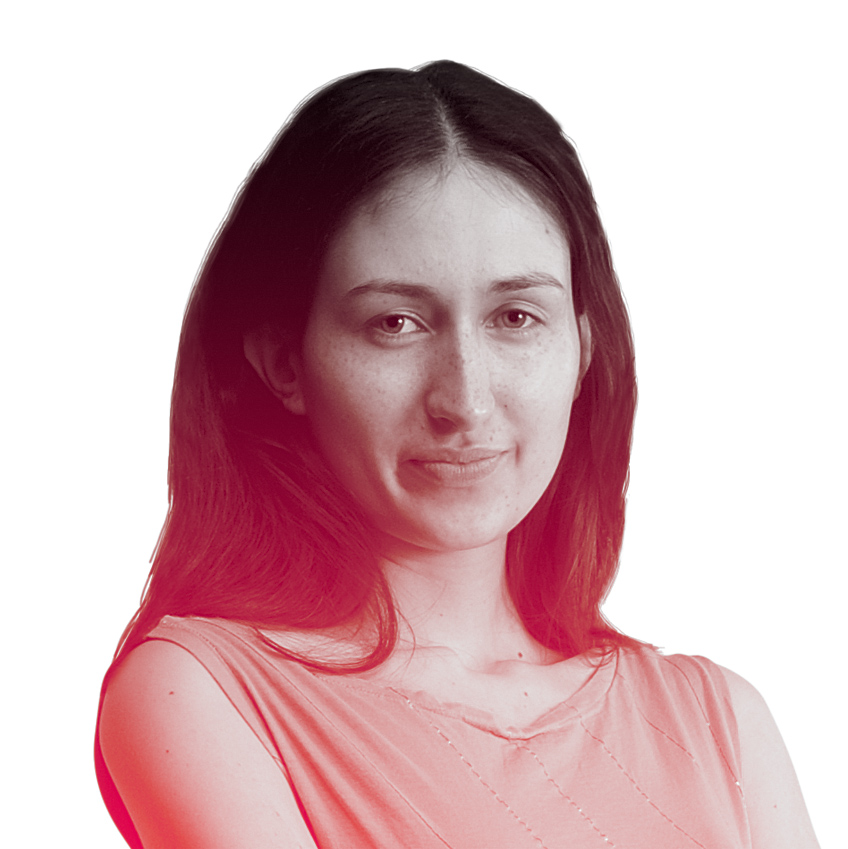
Tanya is a writer covering art, design, and visual effects. She has 16 years of experience as a magazine journalist and has written for numerous publications including ImagineFX, 3D World, 3D Artist, Computer Arts, net magazine, and Creative Bloq. For Creative Bloq, she mostly writes about digital art and VFX.
